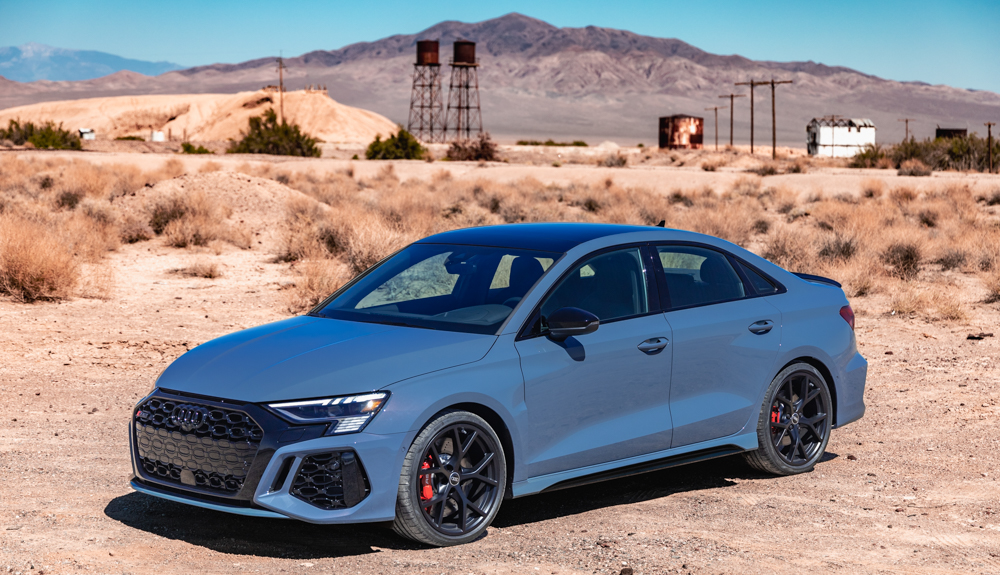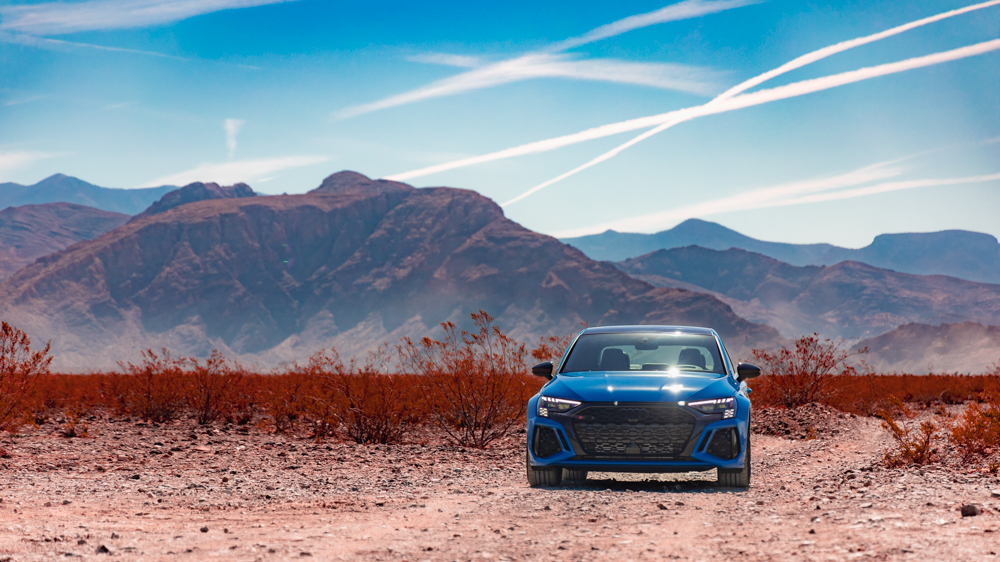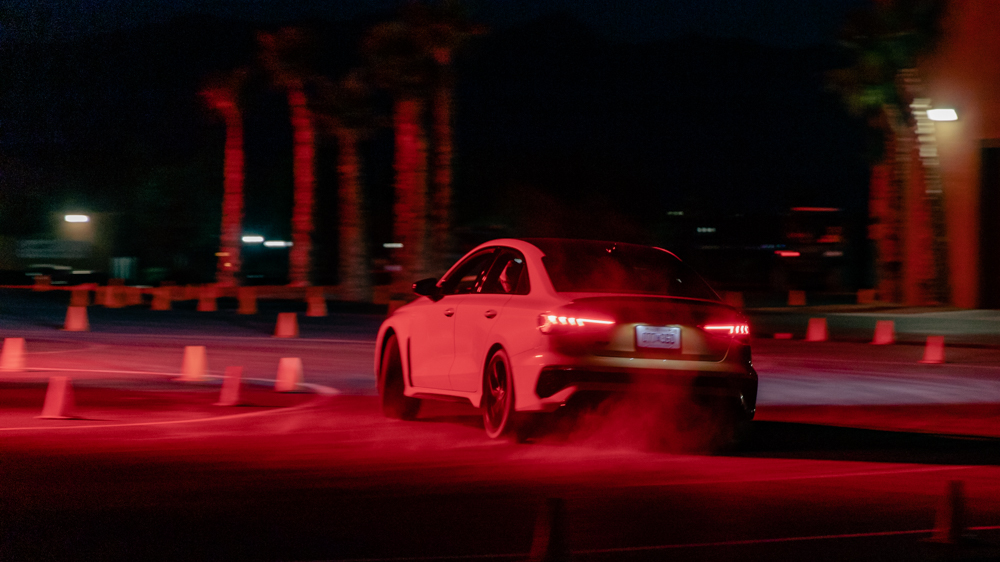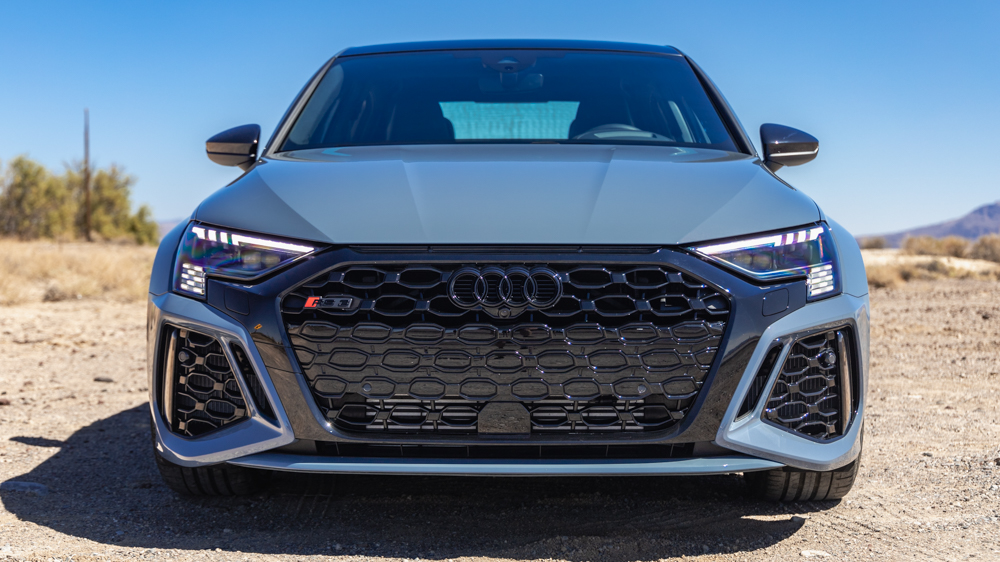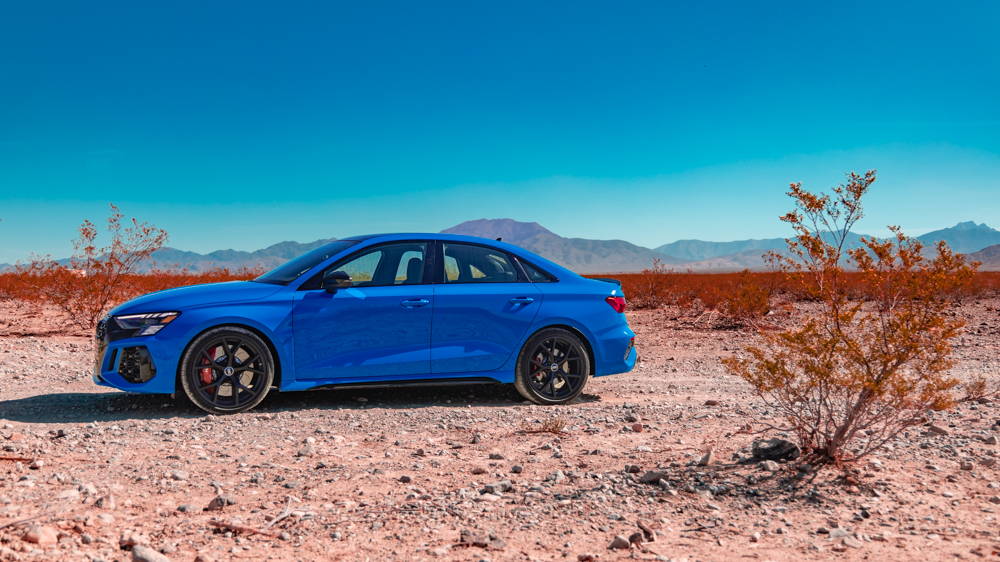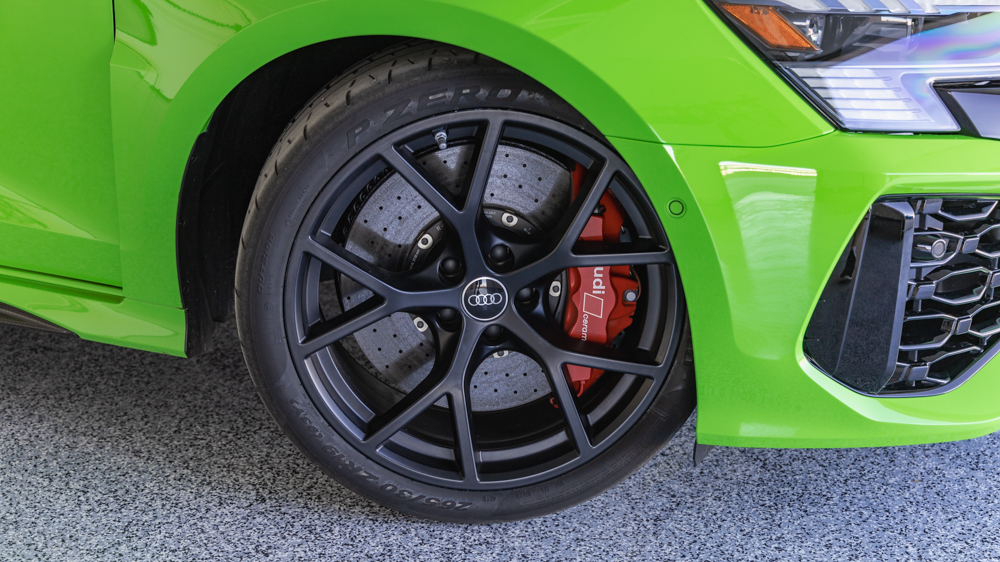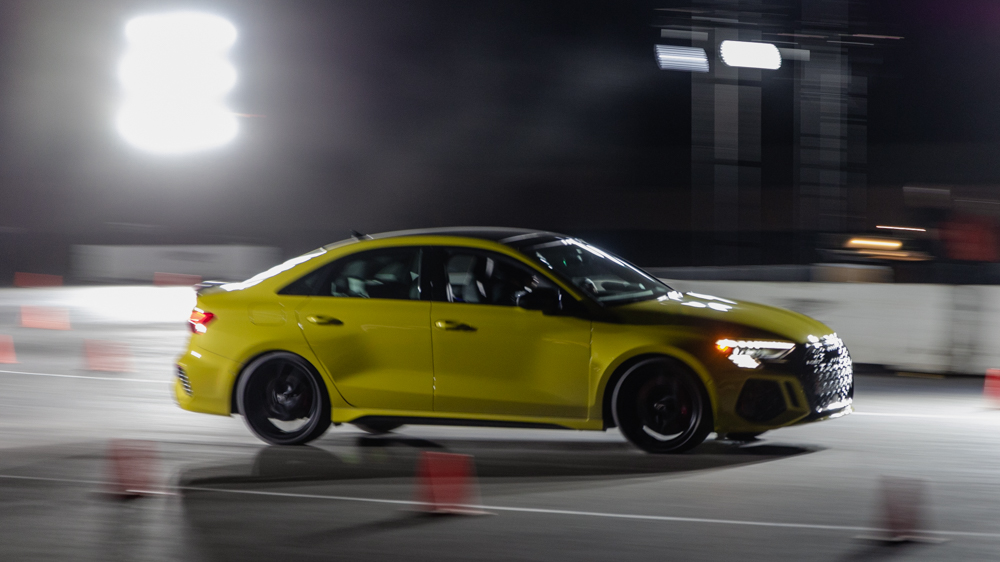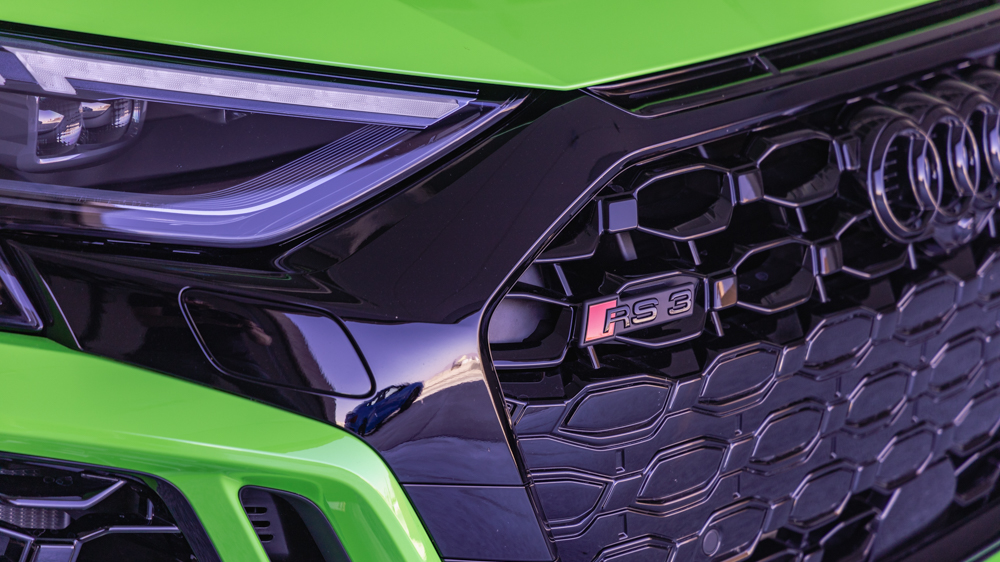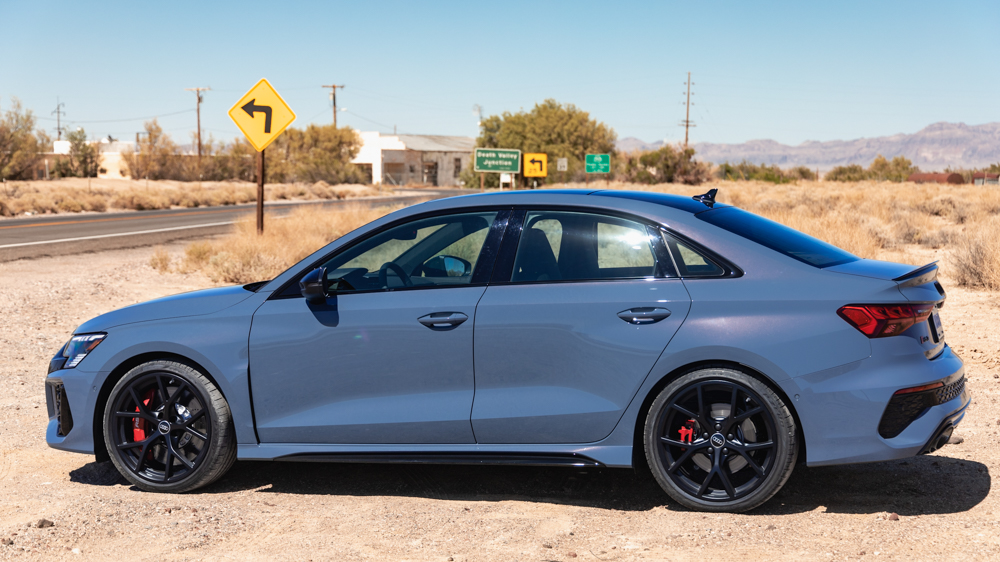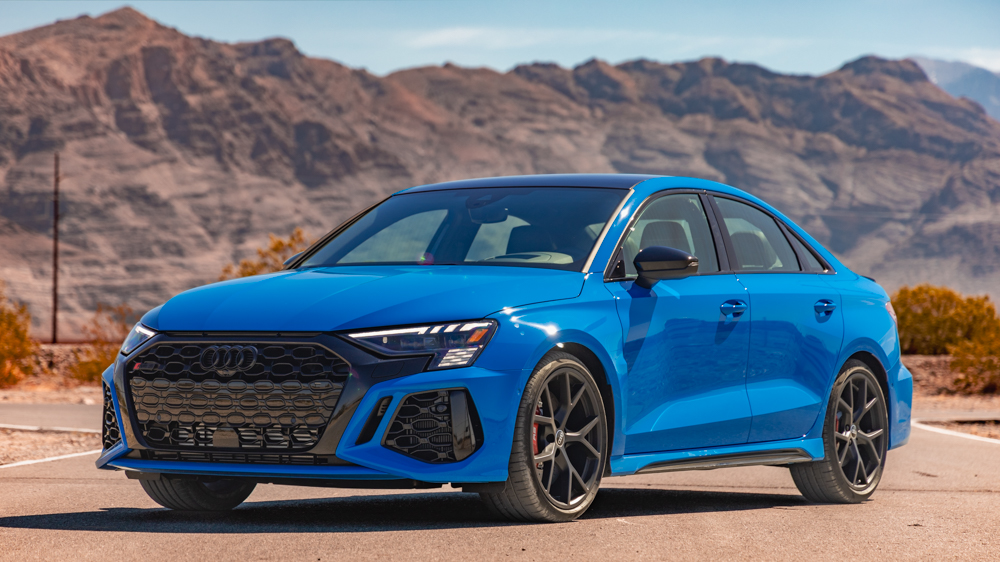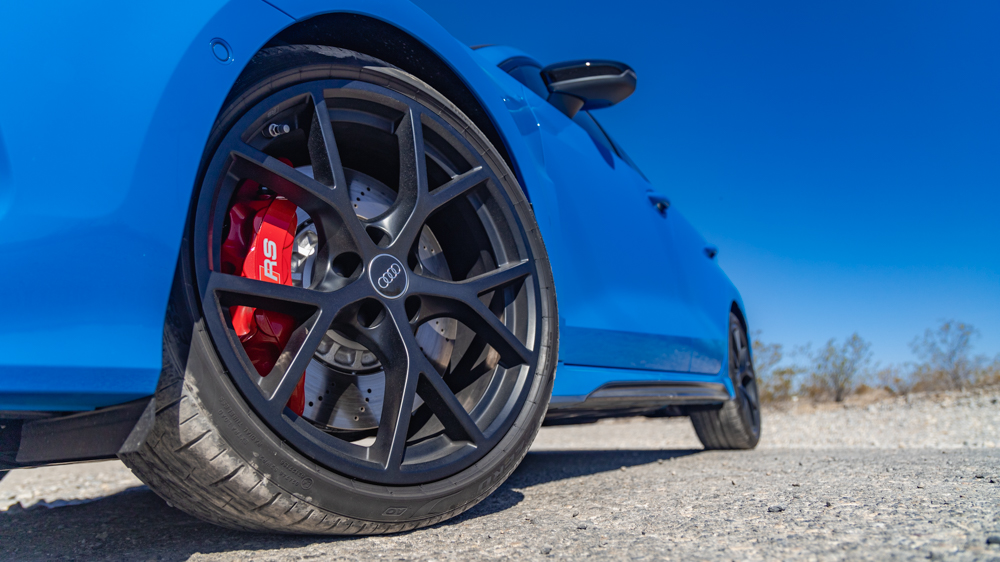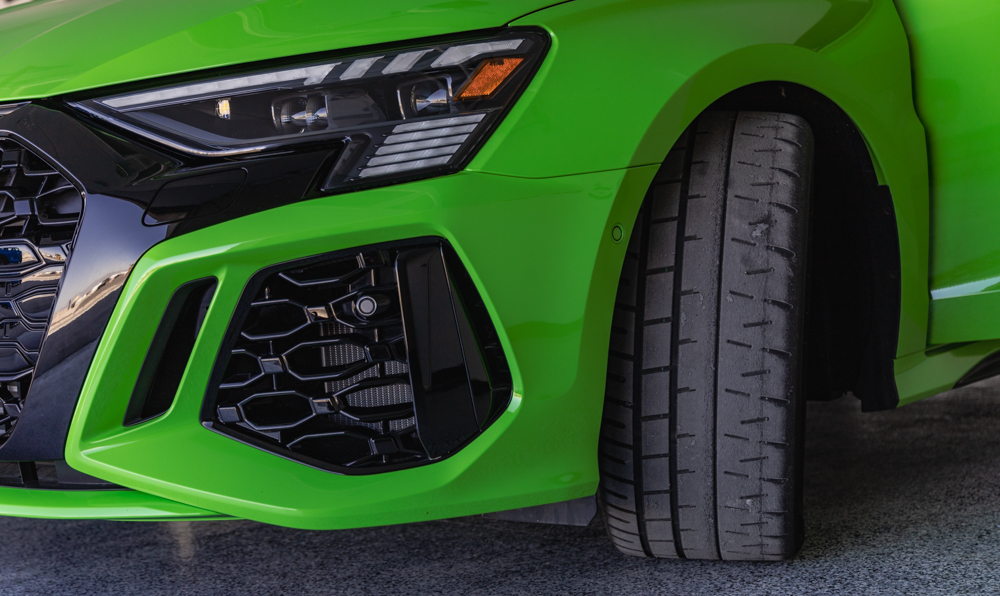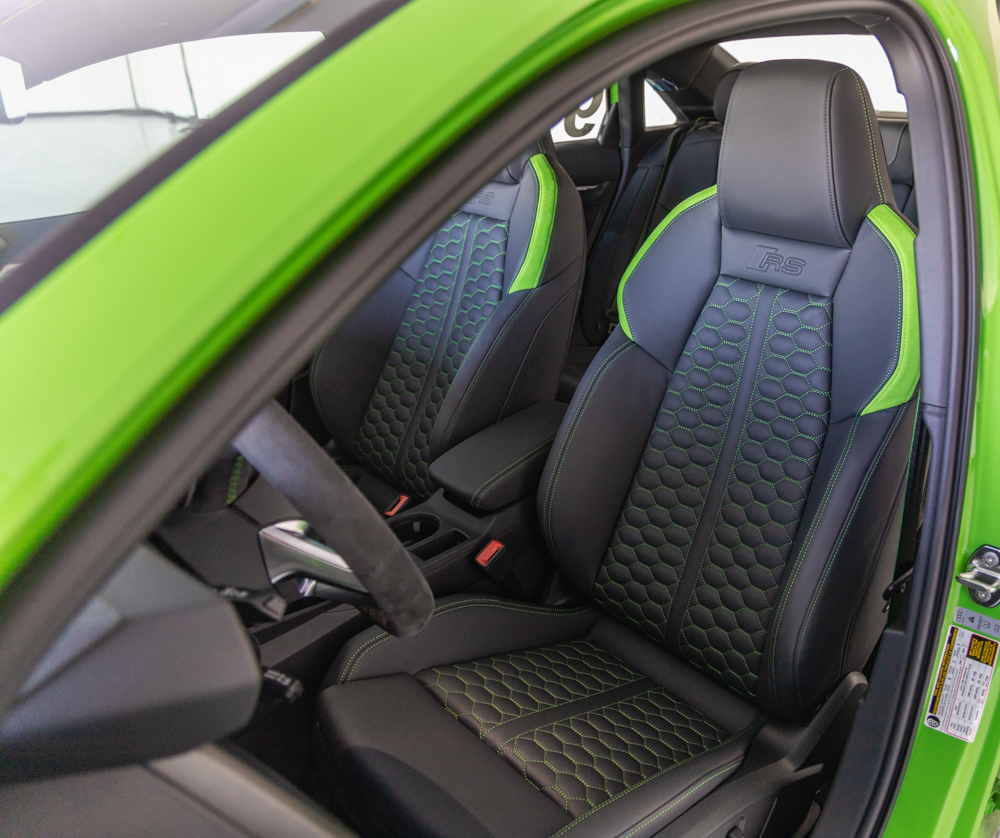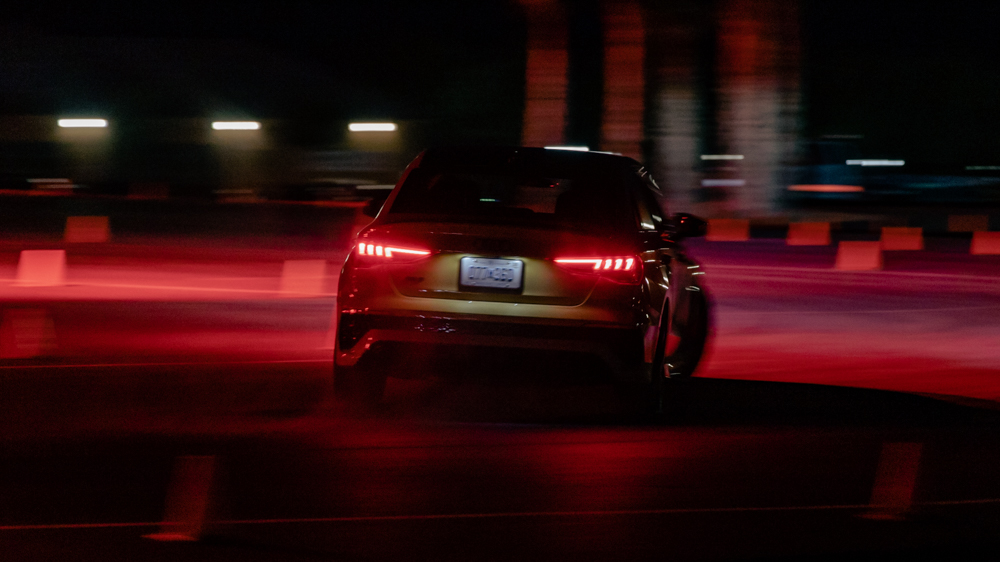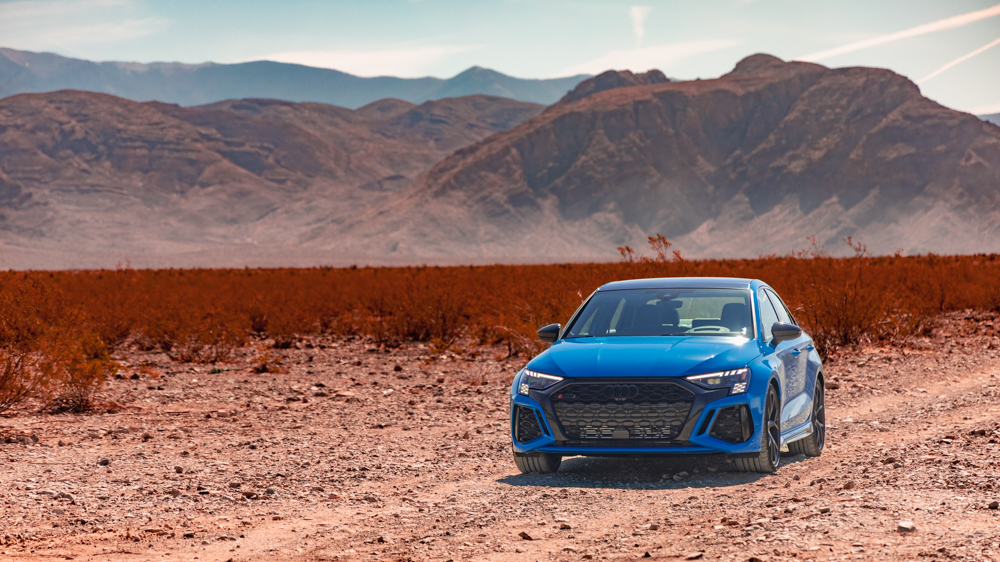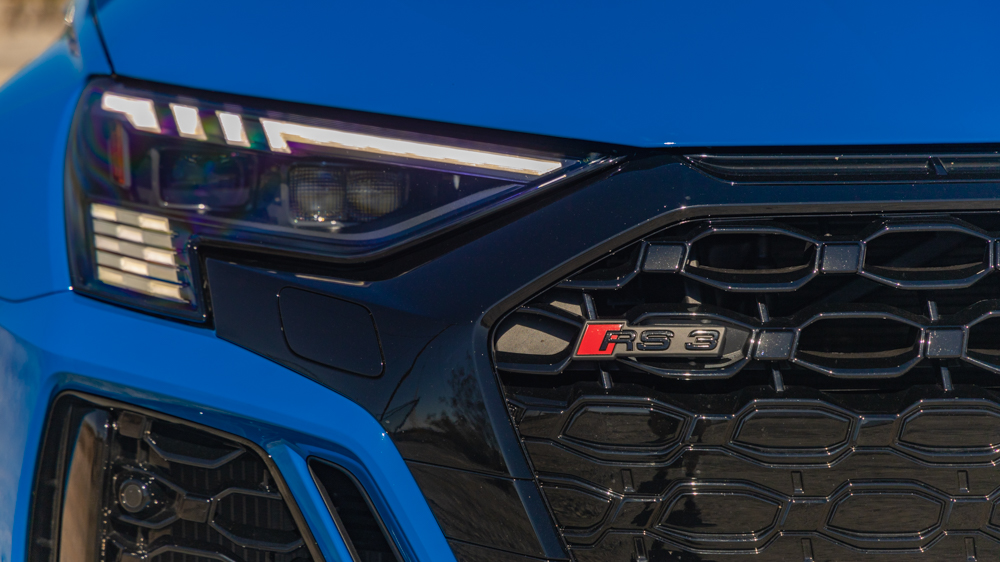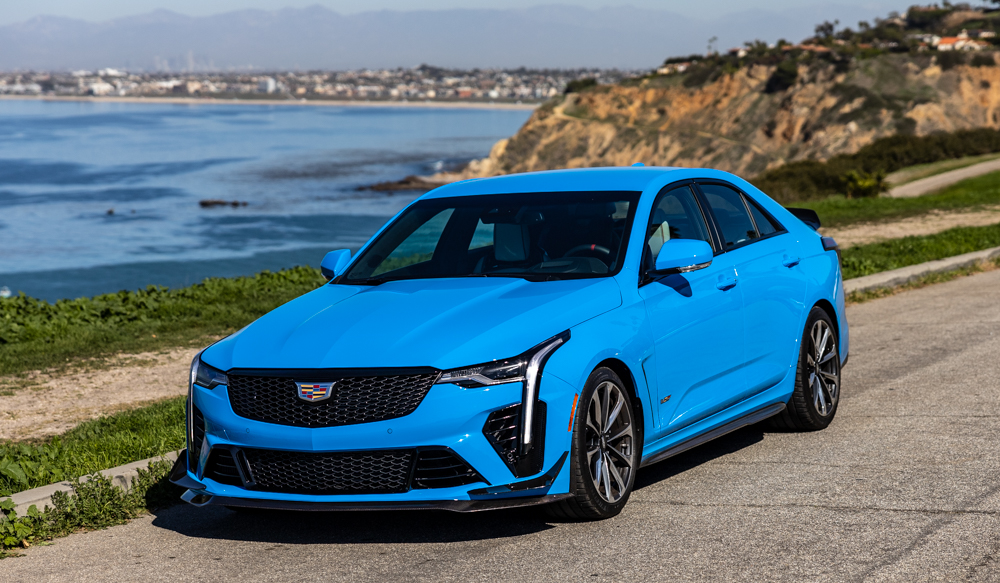2022 Audi RS 3 Review: Audi’s Heart & Soul Reborn
401 ponies running through a 7-speed DTC, quattro all-wheel-drive, and the new RS Torque Splitter make the 2022 Audi RS 3 an absolute blast on the street, track, and skidpad. Well done, Audi.
There may be faster Audis. And fancier Audis. But in the brand’s modern lineup, the 2022 Audi RS 3 may have the most distinct heritage. Today, quattro (lowercase) is synonymous with all-wheel-drive performance. But back in the early 1980s, when most 4x4s were trucks, the all-wheel-drive Quattro (uppercase) was a revelation, bursting onto the scene and ultimately dominating Rallycross and Trans-Am racing.
Turns out, traction matters.
If the heart of 1980s Audi performance was quattro all-wheel-drive, its soul was the 5-cylinder engine with a unique 1-2-4-5-3 firing order — an engine configuration that evolved to power Audi’s very first RS vehicle, the RS 4 Avant — and one that remains today in the TT RS and the new 2022 RS 3, which is why we are here today.
What do YOU think about the new RS 3?
Join the AudiWorld conversation HERE!
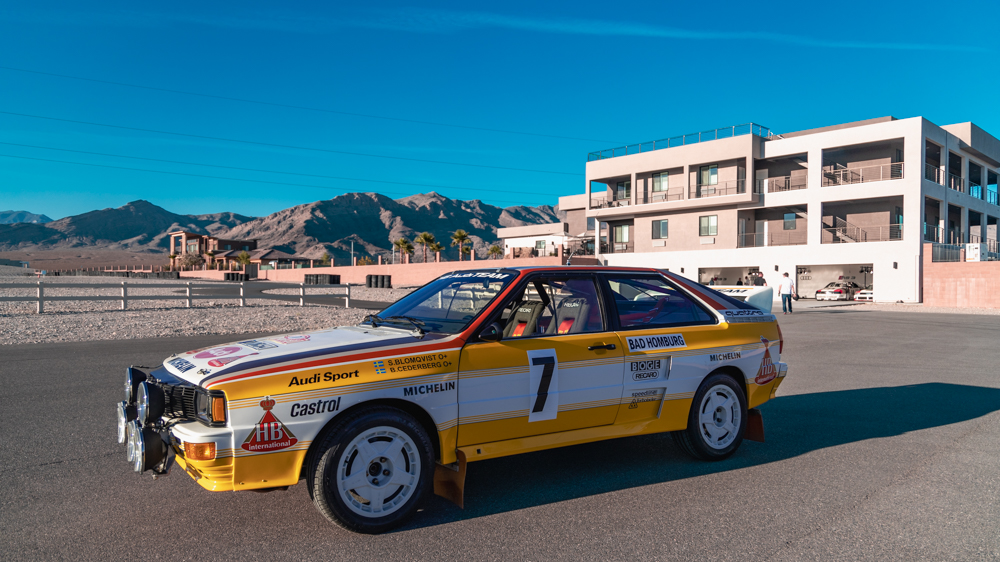
But first, a disclosure: We gathered our first impressions and visual assets during an all-expenses-paid media trip. Audi USA flew 20 auto journalists to Spring Mountain Raceway in Pahrump, Nevada to to test the RS 3 up to and past the limit in safe, controlled environments. While the accommodations were swanky, the provided environments — smooth & poorly maintained desert roads, a two-mile race track, and a skid-pad drifting course — allowed us to develop our own, unbiased opinion on performance. So here goes.
2022 Audi RS 3 Key Specs
Tuned to 401 horsepower — more powerful than the Euro spec — the 5-cylinder RS 3 also boasts 369 lb.-ft. of peak torque, larger brakes, and a wider stance. Helping the RS achieve its Audi-quoted 3.6 second 0 to 60 run, we have a 7-speed DTC (dual-clutch transmission) that offers both a standard and sport-tuned shifting profile, launch control in specific modes, and a full manual mode. (Yes, you can bounce right off the rev limiter.)
All US-spec RS 3 sedans (sadly, there’s no Sportback here) include Dynamic Chassis Control suspension, which is Audi’s newer iteration of magnetic ride control, as well as the RS Torque Splitter rear axle differential. It’s the same one you’ll find in the Golf R, but with Audi-specific software and tuning. To over-simplify smart engineering, the RS 3’s computer analyzes a boat-load of data about how and where you’re driving to send torque to the wheel(s) where you need it most. For example, if you’re accelerating hard to the right, the RS Torque Splitter will send more torque to the outer left wheel.
There are two 19-inch wheel options as well as two standard tire options — Bridgestone Potenza and Pirelli P Zero — with 265/30-19s up front and 235/35-19s out back. Yep, they’re wider in the front. Or you can jump up to the Pirelli P Zero Trofeo R track tires which Audi cautions owners shouldn’t drive in the wet or cold. But, on track, they’re sticky as hell.
RS 3 Drive Modes
Like most modern Audis, the RS 3 is tunable and adjustable based on the system’s Drive Modes. Here’s how they break down:
Comfort tunes the RS 3 to act most like a front-wheel-drive car. Smooth suspension. Calm throttle mapping. Standard shift mode (aka D) with leisure up and down gear changes.
Auto is the set it and forget it mode. You’re still in comfort suspension and standard shifting, but Audi tunes the car to be more balanced in its power distribution
Dynamic mode tightens up the suspension noticeably along with adding Sport (aka S) shifting, louder exhaust (if equipped), and more aggressive throttle mapping. The torque programming is also rear-biased (assuming traction’s available).
RS Individual mode allows the driver to customize everything, so you could do things like blend sport throttle mapping and shifting with comfort suspension (a personal favorite of mine).
RS Performance mode is the RS 3’s track cheat code. You can still choose comfort or dyanamic suspension settings (do this based on the condition of your track), but the goal here is balance. No oversteer. No understeer. Just put the power down and go… even though some of the nannies get turned off. It’s very effective.
Last but not least, we have RS Torque Rear mode, aka drift mode. For closed courses only (#Mexico), in this mode, the nannies go bye-bye and the RS 3 sends all available torque to the back wheels. Simply turn the wheel, drop the hammer, and the back end slides out from behind you while you right-foot modulate the throttle. (More on this below.)
Launch Control & Real World 0-60 Testing
The RS 3 becomes a noticeably different animal depending on drive and transmission mode. In Comfort, it accelerates like an economy car; in Dynamic and the various RS modes, more like a sports car. But there is a noticeable amount of turbo lag at tip-in.
The workaround? Launch control, of course. Put the Audi into one of the RS modes — Sport must be selected for most of the option boxes — put one foot on the brake pedal and the other on the gas, and Launch Control automatically engages.
From there, the RS 3 slams you into the back of your sport bucket seat and hurdles towards illegal speeds. Our best recorded 0 to 60 run was 4.1 seconds on an unprepared asphalt surface. This, according to our Dragy, is worth a 3.81s 0-60 run with a 1ft rollout (a metric most OEMs use for setting 0-60 times).
In short, we didn’t quite reach the advertised 3.6 seconds, but we’re not too far off. And we were running the test on a 93-degree day at 2,661 feet above see level. Regardless of the number, the butt dyno remains impressed.
2022 Audi RS 3 Pricing
A base, no-option 2022 Audi RS 3 will set you back right around $60 grand, including delivery. Here are the major option packages (not including paint):
- RS Technology package – $2,750
- RS design package – $1,500
- Black optic plus package – $750
- Carbon package – $2,750
- Dynamic plus package – $5,500
- RS sport exhaust – $1,000
- Pirelli P Zero Trofeo R tires – $450
- Audi side assist with rear cross traffic assist – $350
We drove, essentially, two different specs over two days. The street and drift RS 3s MSRP’d between $64,845 and $65,440 as equipped with the tech and design packages as well as the RS sport exhaust. The track-spec’d RS 3s added every option, including Dynamic plus package with carbon-ceramic brakes, coming in at $72,890.
In a world where you can easily option twenty or thirty grand (if not more) over the base MRSP, Audi packs a lot of value into the base MSRP and options list. The only thing missing at this price point, I’d argue, is ventilated seats.
RS 3 Colors
Audi trotted out four metallic color options for our media event. And, for a company that makes mostly black, white, and gray vehicles, it was great to see some actual colors. Let’s break them down —
Python Yellow metallic is a showstopper. More on the highlighter spectrum than, say, school bus, we drove this model on the drift course and it’s bright enough to almost glow in the dark. Yellow isn’t for me, but it fits the car.
Kyalami Green is bright and, again, almost highlighter green with very faint metallic flake. On our testers, Audi paired KG with Micromanta Green interior seat stitching and vent accents as part of the RS design package. (Alas, the design package doesn’t color-match every exterior color.) Again, I’m not a green guy, but this one looks terrific IMHO.
Turbo Blue reminds me most of Ford’s current Grabber Blue, which takes a 1970s Mustang color and updates it for the 21st Century with a touch of metallic flake. It really stands out in the desert.
Kemora Gray metallic is a chameleon of a color. In most lighting situations, it appears to be a bluer take on Nardo Gray, but it’s actually more complex. Get a little closer. Let the light hit it in just the right way and there’s a touch of pink and purple dancing in the flake. Subtle, yet gorgeous.
On the Street
Cruising through the sun-soaked deserts of Nevada and California, the 2022 Audi RS 3 reveals itself to be a comfortable commuter. In Comfort mode, it might as well be the A3, but in Dynamic and RS modes, the sports car reveals itself. The suspension is tight, but forgiving with the comfort settings working well on uneven, cracked pavement. Not S8 smooth, mind you, but very livable. The only minor discomfort is road noise — Pirellis aren’t quiet. But it’s nothing the tech package’s sound system can’t overcome.
Speaking of which, the RS 3’s MMI infotainment system works quite well with wireless Apple CarPlay and Android auto as well as wireless charging. It’s basically the same one-screen system with tactile HVAC buttons as other entry-level and mid-teir Audis. Functional, easy to learn and navigate.
The 14.8″ standard slotted steel brakes — with six-piston calipers — haul the RS 3 to a stop effortlessly with great pedal feel. The exhaust note is classic 5-cylinder, but could be a little louder for my tastes.
In short, on the street, the Audi RS 3 can be whatever you want and need. Stuck in traffic with fine Napa leather and great tunes? Not a bad place to be. Or how about a 400 horsepower launch machine that, other journalists allege, races all the way up to the standard 155mph speed limiter (180mph with the Dynamic plus package)? Hell yeah, brother.
On Track
The 2022 Audi RS 3 isn’t going to shock horsepower junkies in the way that the R8 or RS6 provide more brutality. But as a package, it’s the right size and chassis and power to slap a smile all over your face. Tucking into the two-mile east course at Spring Mountain Raceway, RS Performance mode engaged, Trofeo R tires warmed up, hands wrapped around an Alcantara steering wheel, the car roars forwards, brakes easily, and hugs each corner. Where the street tires would squeal when pushed, the Trefeo Rs felt glued to the ground. When tossed into a hot corner, the RS 3 rotates nicely with no hint of understeer.
To be clear, I’m no track regular. But this quattro system with 401 ponies, the 7-speed DTC, an RS torque converter and these tires made me feel like I was at home. It’s a car that can be driven at a full ten-tenths without the sense that you’re going to kill yourself.
Negatives? The seats could be a little better bolstered. And, with the carbon-ceramic brakes, I experience a little more pedal travel than on the steel brakes. Was this because the brakes hadn’t fully bedded (these cars effectively came straight from Germany to this event)? Or was the system in need of a fluid change after three days of desert hot-lapping? I’m not sure. The brakes were never soft in a dangerous way. But as with any track toy, extra maintenance is a good idea.
Speaking of which, our track RS 3s all needed new tires by their third full day of hot lapping. By then most of the sidewalls developed bubbles. Not a criticism, mind you. Just worth noting because track time ain’t a cheap hobby.
Still, the rugged resilience on display was admirable.
We beat the ever-living hell out of these RS 3s and with a new set of tires and a few fluid flushes, they’d be ready to go next weekend (after a week of taking you to the office).
Drift Mode
Last, but not least, drifting the RS 3 is an absolute joy thanks to RS Torque Rear mode. I’m inexperienced in this vehicular art form, outside of growing up in a place where snow encouraged spirited driving. And so I was terrified to drift the RS 3 in front of more talented drivers on a course set up to, I kid you not, spell out the letters R and S.
But I tried anyway and, while I wouldn’t claim to have done a great job, the RS 3 made the experience feel effortless, much like its dedicated track mode. The RS 3’s back end steps out effortlessly and remains easy to modulate with the throttle. I suspect the long, flat turbo-enhanced torque curve helps, but if you’ve ever wanted to live out a Fast n’ Furious fever dream, this might be the car to get.
2022 Audi RS 3 Final Thoughts
Sure, I’d add ventilated front seats with a little extra bolster. And the rear seats aren’t great for adults. But, overall, the 2022 Audi RS 3 is an absolute blast. A driver’s car for enthusiasts who want something small, sporty, and luxurious. Balanced, nimble, and quick, it’s a vehicle born from the essence of Audi racing heritage. And it’s as comfortable cruising along crumbling roads as it is hot-lapping (literally) all day long.
Over the course of three days, 20 auto journalists, along with several pros and techs, beat the absolute piss out of the first dozen RS 3s to hit North America in 100-degree desert heat. Quite simply, they performed flawlessly. (Although the track cars needed new tires and a few fluids flushed.) And so it is with ZERO sense of hype or marketing glee that I say the RS 3 is well worth your consideration if it fits your lifestyle and means.
Should I Upgrade if I Own the Previous Generation RS 3?
Maybe. The power upgrade isn’t dramatic. But the new RS torque splitter adds a lot to the driving dynamics. Especially if you’re the type who tracks or auto-crosses. More specifically, where the previous generation could understeer at the limit, the 2022 RS 3 is more balanced and will even drift.
In short, the new RS 3 is the best one ever… but outside of the most extreme ten-tenths driving, I wouldn’t upgrade unless one’s lease is up.
Alternate Cars to Consider
For those looking for a more analog experience, check out the Cadillac CT4-V Blackwing. The interior isn’t as nice. And there’s no all-wheel-drive. But it boasts a six-speed manual gearbox, ventilated front seats, a better infotainment system, Michelin Pilot Sport 4S tires, and a little more rear passenger and trunk space.

